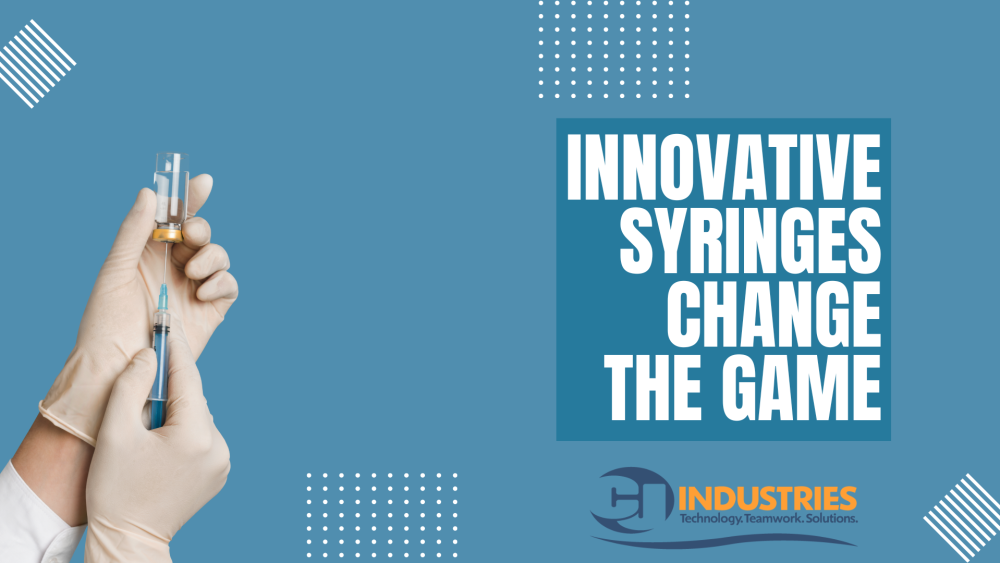With recent advancements in pharmaceuticals, the syringe market has experienced significant changes. Traditional syringes have limitations that make them incapable of serving the entire market. The introduction of COP (cyclic olefin polymer) and COC (cyclic olefin copolymer) plastic syringes mark a progressive and necessary change in the market; this new technology will not only simplify tasks for healthcare professionals, but will also make products safer for patients.
Benefits Over Glass:
- Cost: 1/4 to 1/10 the cost of glass syringe luer lock syringe assemblies
- Shatter Resistance: Will not shut down pharma filling production line
- Weight: <50% that of glass thus reducing shipping costs
- Design Flexibility: Finger grips, luer tip style, back stop – molded in features
- Very Low Protein Absorption
Benefits Over Polypropylene (PP):
- Higher Purity
- Higher Modulus
- Glass-like Clarity
- Sterilizability
- Greater Chemical/Heat Resistance
- Higher Moisture Barrier
- Low Moisture Absorption Rate
COC features glass-like clarity while also being break-resistant, lightweight, and withstanding conventional sterilization methods. It is suitable for a range of medications, including viscous drugs, and provides for an extended shelf life. The unique processing methods allow for the production of a high quality product that exceeds the accuracy and performance standards set by glass syringes. The superior moisture barrier with COC medical syringes extends the shelf life of some pharmaceutical solutions by 3 years, a standard that can’t be met by other thermoplastics used in less challenging applications. With COC syringes, the drug remains pure because COC is biologically inert, with very low extractables.
COP plastic syringes have similar properties to COC syringes, but are even less brittle and can be made into more varied size and complex shaped containers. COP syringes are increasingly popular in applications where high viscosity products require high strength and high transparency to ensure the product is thoroughly injected.
PP (Polypropylene) films use COC as a performance enhancer to simplify films and compete with more complex, less recyclable structures. The extremely high purity and unique properties of COC have made it the dominant material in advanced diagnostic and microfluidic applications. The material’s use in primary drug packaging has become much more prevalent as newer pharmaceutical molecules and formulations trend toward more chemical sensitivity rather than lower-purity plastics and glass.
Typical COC material has a higher modulus than PP. COC also has a high moisture barrier for a clear polymer along with a low moisture absorption rate. Importantly for medical uses, COC is sterilizable by all standard methods including steam, EtO, gamma, and hydrogen peroxide. The optical properties of COC are exceptional, and in many ways very similar to glass. COC materials offer exceptional transparency with a high chemical and heat resistance. Low moisture absorption rates of COC are often an advantage over competing materials such as polycarbonate and acrylics.
Overall, the benefits of COC (cyclic olefin copolymer) plastic syringes and its chemical cousin COP (cyclic olefin polymer) are unmatched. When compared to traditional syringes, this new material provides lower cost options, better breakage resistance, lighter weight, more design flexibility, higher purity, higher modulus, and less absorption of the drug, just to name a few. These types of advancements demonstrate a promising future for the medical and pharmaceutical industry, which is always striving to not only make life easier for healthcare professionals, but also to make products safer for patients.
Sources:
- Sparrow N. Pharma company sees clear advantages in COC syringe. Plastics Today. November 16, 2023. Accessed August 29, 2024. https://www.plasticstoday.com/medical/pharma-company-sees-clear-advantages-in-coc-syringe.
- Equinox Syringes. COP and COC Prefillable Syringes. Plastechengineering. 2024. Accessed August 29, 2024. https://www.plastechengineering.com/glass-replacement.
- Kneale T. Medical plastics 101: Cyclic olefin copolymer. Plastics Today. July 11, 2024. Accessed August 29, 2024. https://www.plasticstoday.com/medical/medical-plastics-101-cyclic-olefin-copolymer-fulfills-complex-medtech-performance-requirements.


